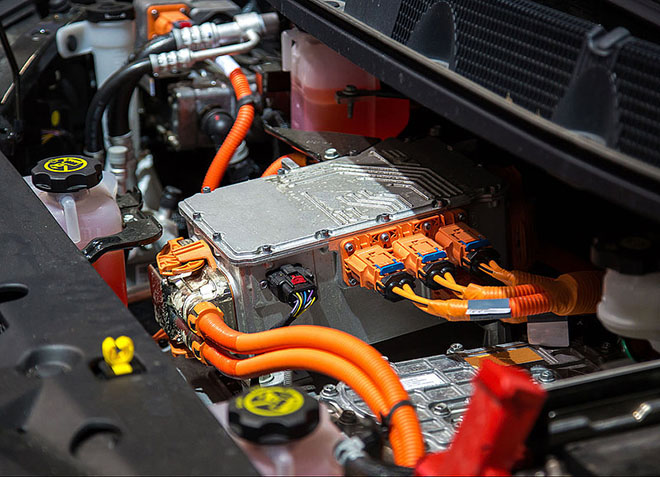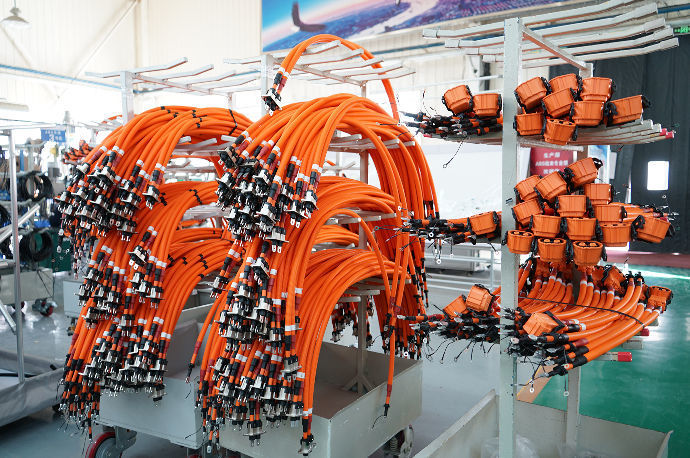High voltage wire harness manufacturing process
Traditional heavy-duty trucks mostly use fuel to generate energy. The mechanical movement of the engine generates kinetic energy to drive the transmission shaft, generator, compressor, bridge pulley, pulley and other components to realize the driving of the vehicle and the operation of electrical appliances. However, the problems of high pollution, strict emission standards, low cost performance and high noise have not been effectively solved, which have restricted the development of fuel vehicles. New heavy trucks use new energy and new power. For example, electric heavy trucks use power battery packs to realize energy transmission, which perfectly solves the problems of fuel heavy trucks. The high-voltage wiring harness is an indispensable part of the electric heavy truck. It is the blood vessel of the entire electrical system and ensures the efficient operation of the transmission system. The transmission wires between high-voltage components are high-voltage wires. The high-voltage wires with rated voltage AC1000/DC1500 commonly used on new energy heavy trucks are truly high-voltage wire harnesses. The article briefly discusses the processing technology of high-voltage wire harnesses, which plays a certain guiding role in the processing of new energy wire harnesses.

High voltage wire harness process preparation
1.1 Composition of high-voltage lines
The high-voltage wiring harness includes: high-voltage wires, high-temperature-resistant corrugated tubes, high-voltage connectors or ground iron, heat shrink tubes, and labels.
1.2 Selection of high-voltage lines
Select wires according to the drawing requirements. At present, heavy truck high-voltage wiring harnesses mostly use cables. Rated voltage: AC1000/DC1500; heat resistance level -40~125℃; flame retardant, halogen-free, low smoke characteristics; double-layer insulation with shielding layer, outer The insulation is orange. The order of models, voltage levels and specifications of high-voltage line products is shown in Figure 1:
1.3 High voltage connector selection
High-voltage connectors that meet the selection requirements meet electrical parameters: rated voltage, rated current, contact resistance, insulation resistance, withstand voltage, ambient temperature, protection level and a series of parameters. After the connector is made into a cable assembly, the impact of the vibration of the entire vehicle and equipment on the connector or contact must be considered. The cable assembly should be routed and fixed appropriately based on the actual installation position of the wiring harness on the entire vehicle.
1.4 Selection of auxiliary materials

The bellows is closed and the color is orange. The inner diameter of the bellows meets the specifications of the cable. The gap after assembly is less than 3mm. The material of the bellows is nylon PA6. The temperature resistance range is -40~125℃. It is flame retardant and salt spray resistant. corrosion. The heat lock tube is made of glue-containing heat shrinkable tube, which meets the specifications of the wire; the labels are red for the positive pole, black for the negative pole, and yellow for the product number, with clear writing.
High wire harness production
(1) The left side of the process card shows the technical requirements, and all references are subject to the technical requirements; the right side shows the precautions: keep the end faces flush when the terminals are crimped, keep the labels on the same plane when heat shrinking, and the key to the shielding layer Size, hole position restrictions of special connectors, etc.
(2) Select the specifications of the required materials in advance. Wire diameter and length: High-voltage wires range from 25mm2 to 125mm2. They are selected according to their functions. For example, controllers and BMS need to choose large square wires. For batteries, small square wires need to be selected. The length needs to be adjusted according to the margin of the plug-in. Stripping and stripping of wires: Crimping of wires requires stripping off a certain length of copper wire crimping terminals. Select the appropriate stripping head according to the terminal type. For example, SC70-8 needs to be stripped of 18mm; the length and size of the lower tube: The diameter of the pipe is selected according to the specifications of the wire. The size of the heat shrink tube: The heat shrink tube is selected according to the specifications of the wire. Print label and location: identify the unified font and required auxiliary materials.
(3) The assembly sequence of special connectors (as shown in Figure 3): generally includes dust cover, plug housing parts, jack parts, elbow accessories, shielding rings, sealing parts, compression nuts, etc.; according to Sequential assembly and crimping. How to deal with the shielding layer: Generally, there will be a shielding ring inside the connector. After wrapping it with conductive tape, it is connected to the shielding ring and connected to the shell, or the lead wire is connected to the ground.
